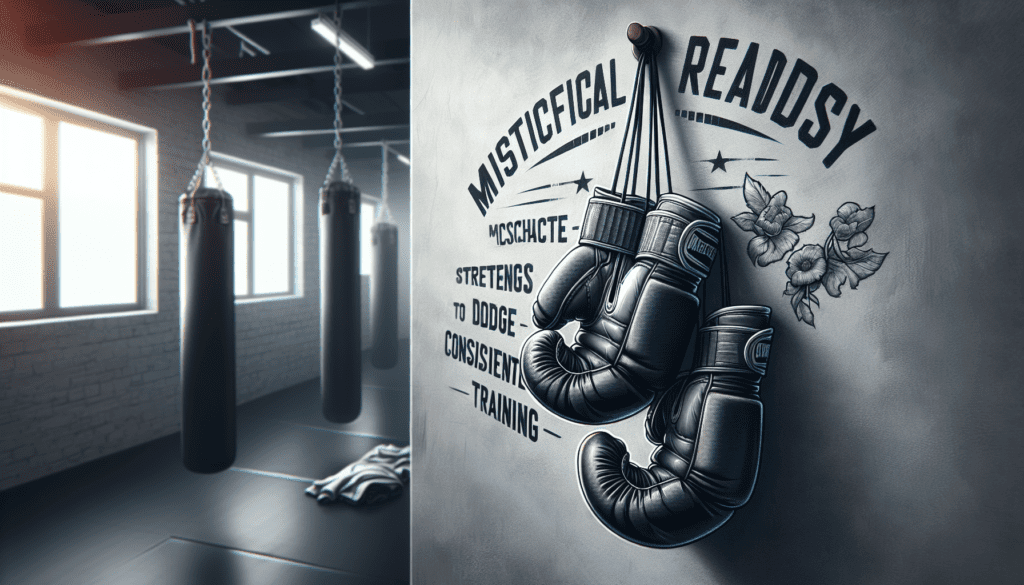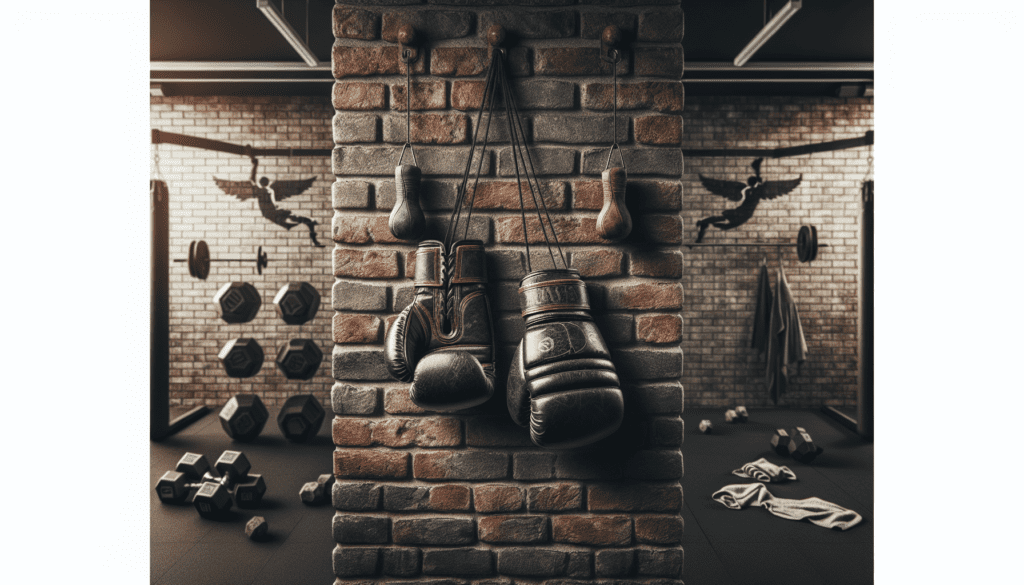Welcome to the ultimate guide on preventing injuries in MMA with these top 10 stretches. Whether you’re a seasoned fighter or just starting out, incorporating these stretches into your routine can help increase flexibility, improve range of motion, and reduce the risk of injuries during training and fights. From dynamic stretches to static holds, these exercises will target key muscle groups used in MMA to keep you strong, agile, and injury-free. So grab your yoga mat and get ready to kick, punch, and stretch your way to a healthier and more resilient body. Have you ever wondered how MMA fighters manage to stay injury-free during intense training sessions and fights? Well, the secret lies in proper stretching techniques. By incorporating specific stretches into your routine, you can prevent common injuries and enhance your overall performance in the octagon. In this article, we will outline the top 10 stretches that every MMA fighter should incorporate into their training regimen. So, grab your yoga mat and let’s get started on the path to injury prevention!

Importance of Stretching in MMA
Stretching is a crucial component of any MMA training program. By incorporating regular stretching sessions into your routine, you can improve flexibility, mobility, and muscle recovery. Stretching also helps prevent injuries by increasing blood flow to the muscles, reducing muscle tension, and improving range of motion. In addition, stretching can help improve your performance in the cage by enhancing your overall agility and speed. So, if you want to stay injury-free and maximize your potential as an MMA fighter, it’s essential to prioritize stretching in your training routine.
Stretching Before vs. After Training
Stretching before and after training sessions is essential for injury prevention and muscle recovery. Before training, dynamic stretches such as leg swings, arm circles, and lunges can help warm up your muscles and prepare them for the intensity of your workout. Dynamic stretching helps increase blood flow to the muscles, improve range of motion, and enhance flexibility. On the other hand, static stretches should be performed after your training session to help relax the muscles, reduce muscle tension, and improve recovery. By incorporating both dynamic and static stretches into your pre and post-training routine, you can optimize your performance and stay injury-free.
Top 10 Stretches for Preventing MMA Injuries
1. Hip Flexor Stretch
The hip flexor stretch is crucial for MMA fighters as it helps improve hip flexibility and mobility, which are essential for executing kicks, takedowns, and ground techniques. To perform the hip flexor stretch, kneel on one knee with the other foot flat on the ground in front of you. Slowly lean forward, keeping your back straight, until you feel a stretch in the front of your hip. Hold this position for 30 seconds and then switch sides. By incorporating the hip flexor stretch into your routine, you can prevent hip injuries and improve your overall performance in the cage.
2. Hamstring Stretch
The hamstring stretch is essential for improving lower body flexibility and preventing injuries such as hamstring strains. To perform the hamstring stretch, sit on the ground with one leg extended in front of you and the other leg bent at the knee. Reach towards your toes, keeping your back straight, until you feel a stretch in the back of your thigh. Hold this position for 30 seconds and then switch sides. By incorporating the hamstring stretch into your routine, you can improve your kicking technique, prevent hamstring injuries, and enhance your overall performance in MMA.
3. Shoulder Stretch
The shoulder stretch is crucial for MMA fighters as it helps improve shoulder mobility, reduce the risk of shoulder injuries, and enhance overall upper body flexibility. To perform the shoulder stretch, stand with your feet shoulder-width apart and lift one arm above your head, bending it at the elbow. Use your other hand to gently push the elbow towards the opposite shoulder until you feel a stretch in your shoulder and upper back. Hold this position for 30 seconds and then switch sides. By incorporating the shoulder stretch into your routine, you can improve your punching technique, prevent shoulder injuries, and enhance your overall performance in the cage.
4. Quadriceps Stretch
The quadriceps stretch is essential for improving leg flexibility, preventing quadriceps strains, and enhancing kicking technique in MMA. To perform the quadriceps stretch, stand with your feet hip-width apart and bend one knee, bringing your heel towards your glutes. Grab your ankle with your hand and gently pull towards your glutes until you feel a stretch in the front of your thigh. Hold this position for 30 seconds and then switch sides. By incorporating the quadriceps stretch into your routine, you can prevent leg injuries, improve your kicking power, and enhance your overall performance in the octagon.
5. Chest Stretch
The chest stretch is crucial for MMA fighters as it helps improve upper body flexibility, reduce the risk of shoulder injuries, and enhance punching technique. To perform the chest stretch, stand in a doorway with your hands on either side of the frame at shoulder height. Lean forward until you feel a stretch in your chest and shoulders. Hold this position for 30 seconds. By incorporating the chest stretch into your routine, you can prevent shoulder injuries, improve your punching power, and enhance your overall performance in the cage.
6. Calf Stretch
The calf stretch is essential for improving lower leg flexibility, preventing Achilles tendon injuries, and enhancing kicking technique in MMA. To perform the calf stretch, stand facing a wall with one foot forward and one foot back. Keep your back knee straight and bend your front knee while pressing your back heel towards the floor until you feel a stretch in your calf. Hold this position for 30 seconds and then switch legs. By incorporating the calf stretch into your routine, you can prevent lower leg injuries, improve your kicking power, and enhance your overall performance in the octagon.
7. Groin Stretch
The groin stretch is crucial for improving hip flexibility, preventing groin strains, and enhancing ground techniques in MMA. To perform the groin stretch, sit on the ground with the soles of your feet together and your knees bent out to the sides. Gently press your knees towards the floor until you feel a stretch in your inner thighs. Hold this position for 30 seconds. By incorporating the groin stretch into your routine, you can prevent groin injuries, improve your ground game, and enhance your overall performance in the cage.
8. Triceps Stretch
The triceps stretch is essential for improving arm flexibility, reducing the risk of elbow injuries, and enhancing grappling techniques in MMA. To perform the triceps stretch, reach one arm overhead, bending it at the elbow. Use your other hand to gently push the elbow towards the opposite shoulder until you feel a stretch in your triceps. Hold this position for 30 seconds and then switch arms. By incorporating the triceps stretch into your routine, you can prevent arm injuries, improve your grappling skills, and enhance your overall performance in the octagon.
9. Back Stretch
The back stretch is crucial for improving spinal flexibility, preventing back injuries, and enhancing overall mobility in MMA. To perform the back stretch, lie on your back with your knees bent and feet flat on the ground. Slowly roll your knees to one side, keeping your shoulders flat on the ground, until you feel a stretch in your lower back. Hold this position for 30 seconds and then switch sides. By incorporating the back stretch into your routine, you can prevent back injuries, improve your overall mobility, and enhance your performance in the cage.
10. Neck Stretch
The neck stretch is essential for improving neck mobility, reducing the risk of neck injuries, and enhancing defensive techniques in MMA. To perform the neck stretch, sit in a chair with your feet flat on the ground. Gently tilt your head to one side, bringing your ear towards your shoulder until you feel a stretch in your neck. Hold this position for 30 seconds and then switch sides. By incorporating the neck stretch into your routine, you can prevent neck injuries, improve your defensive skills, and enhance your overall performance in the octagon.
In conclusion, incorporating the top 10 stretches outlined in this article into your MMA training regimen can help prevent common injuries, improve flexibility, enhance technique, and optimize your performance in the cage. By prioritizing stretching in your routine, you can stay injury-free, enhance your overall mobility, and take your MMA skills to the next level. So, remember to stretch regularly, listen to your body, and make injury prevention a top priority in your MMA journey. Your body will thank you, and your opponents won’t know what hit them!


